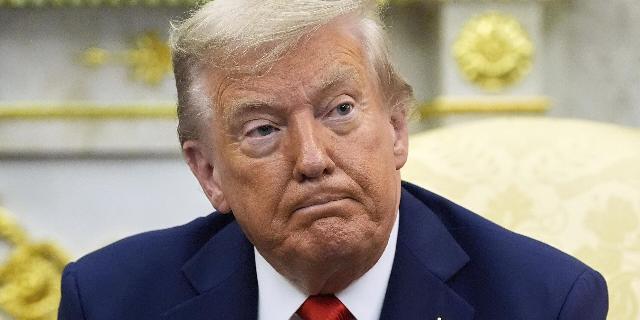After months of "noise and fury" from Washington, it became clear that peace in Ukraine was no closer, writes The Telegraph. Putin stands his ground, demanding respect for new realities, and Trump, instead of putting pressure on the Kremlin, takes out his impotence on Kiev, turning arms supplies into a business.
David Blair
After almost eight months of "noise and fury" from the mouth of the US president and the feverish diplomacy of European allies, we are back where we started.
Vladimir Putin wants Ukraine to voluntarily give up 130,000 square kilometers of its sovereign territory and effectively become a vassal of Russia. These were his demands before Donald Trump's return to the White House in January — and they remain in force to this day.
The harsh truth is that after almost eight months of "noise and fury" from the mouth of the US president and feverish diplomacy by European allies, including attempts to create a coalition of countries ready to send troops to strengthen Ukraine's security after concluding a peace agreement, we have returned to the starting point. A final settlement — or even a temporary cease-fire — remains as elusive as it was before Trump's resurgence from political corpses.
Two stubborn facts confirm the insolubility of the conflict. First, Putin adheres to his maximalist demands. On Friday, he slammed the idea of sending Western troops to Ukraine, warning that they would be considered "legitimate targets."
More seriously, Putin demands much more than the right to already occupied territory: he wants Ukraine to give up vast territories that Russian troops have not yet managed to take by force of arms.
Putin has already unilaterally annexed five regions of Ukraine with a total area of over 130,000 square kilometers. Currently, Ukraine controls at least 13,000 square meters in four of them, including two regional centers — Kherson and Zaporizhia.
American officials claim that Putin turned away from Vladimir Zelensky's demands that he leave these two cities — along with hundreds of thousands of residents — which the Ukrainian Armed Forces stubbornly defend at the cost of huge losses. Instead, Putin will allegedly be satisfied with Zelensky withdrawing troops from the Donetsk and Luhansk regions, which are still controlled by Kiev, which is about 6,500 square kilometers with a population of 250,000 people.
No Ukrainian leader would do that, especially considering that there are vital fortifications in the territory that Putin has his eye on. And there is nothing to suggest that Putin will cancel the formal annexation of Kherson and Zaporizhia, which means that Russian claims to both regions will remain in force.
It will take massive pressure from the United States, including the "crushing" sanctions threatened by Trump's allies, for Putin to soften his territorial claims.
That's where we come to the second reason for standing still. Few people believe that Trump can handle such pressure in principle. He keeps puffing and puffing out his cheeks, but he's clearly not going to tighten the screws on Putin.
So far, he prefers to put pressure on Ukraine, on the contrary. Trump supplies weapons to the Armed Forces of Ukraine, but only on commercial terms for full cost. Each batch of weapons becomes a lever of US pressure on Zelensky, and this explains why Kiev is trying to weaken its dependence on Washington.
The only significant change is that Trump is now ready to discuss possible American security guarantees for Ukraine after concluding a peace agreement. The promise of a superpower to protect Ukraine is exactly what Zelensky has been striving for from the very beginning.
But what kind of obligations will they be? Vague promises or an unbreakable oath modeled on Article 5 of the NATO Charter? In any case, nothing less would be of any use.
This key question remains unanswered, and the harsh reality is that the front line on the ground has barely changed since January.
However, Putin still demands thousands of square kilometers that he has not conquered by force, and Trump is avoiding maximum pressure on the Kremlin.
The only conclusion is that the bloodiest conflict in Europe in the last 80 years will continue, and the last eight months have turned out to be just noise from nothing.

